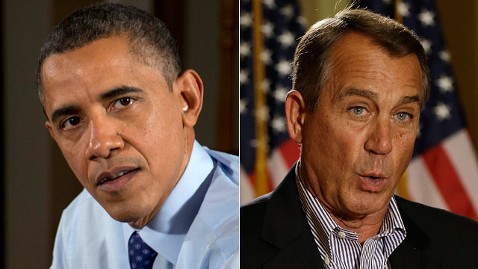Obama and Boehner Not Far Apart on Fiscal Cliff? Not Really

Carolyn Kaster/AP Photo; Pablo Martinez Monsivais/AP Photo
There are some in Washington and around Capitol Hill who keep saying that House Speaker John Boehner and President Obama really aren't that far apart on the " fiscal cliff" and there will be a deal despite Boehner's proposal to hold a vote on his "Plan B."
Let's deconstruct the two parts of that thinking.
Boehner and Obama really aren't that far apart?
Not really.
The differences are more significant than just tax rates. Republicans say the Democratic offer is really $800 billion in spending cuts and $1.3 trillion in tax increases. That is because the inflation adjustment applies to tax rates* as well as Social Security - resulting in less than $100 billion in added tax revenues.
Democrats count that as a spending cut. Republicans say that is a tax hike. So the real difference, from their perspective, is $450 billion. The $400,000 vs. $1 million threshold for tax rates hikes is just one part of this. Republicans want more spending cuts and fewer tax increases.
Related: Read More About the Fiscal Cliff
Obama and Senate Democrats are fond of saying they are this close (fingers close together). They say Boehner should just accept the president's offer.
But, as I asked Senate Majority Leader Harry Reid, D-Nev., earlier today: If you are this close why not just accept Boehner's offer? He dodged, saying that Boehner's offer wasn't really an offer and likened him to Lucy and the football - you'll recall the routine in which the "Peanuts" character would pull away the ball at the last second and leave Charlie Brown kicking at nothing but air.
Both sides like to talk about Lucy and the football, but that is another story. Will there be a deal?
They should be able to do a deal. I know where the deal should be. So do you. But, really, they aren't quite as close as the nifty charts like this one from the Washington Post suggest. And this is about much more than the $400,000 tax-rate threshold.
*By lowering the government's calculation for inflation, the income level for the top rates would rise at a slower rate, putting more and more people into the top rates.